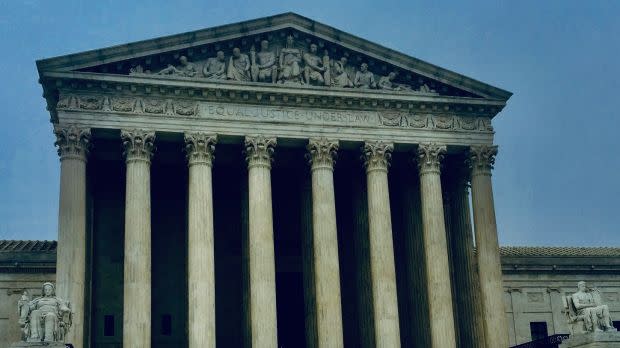Trump’s attacks on SCOTUS justices mask a true recusal issue

US president Donald Trump this week shocked law commentators by calling for certain progressive Supreme Court justices to recuse themselves from all Trump-related matters.
He was especially miffed because Sonia Sotomayor just wrote a sharp dissent accusing colleagues on the bench of bending to the will of one particular litigant. That is, the Trump administration. But Sotomayor never named the president and was complaining about his administration’s unprecedented reliance on emergency petitions to circumvent the usual appeals process, not talking politics. It’s her job to dissent when she disagrees with the majority.
Thus, the president’s sentiments drew widespread criticism. Even professor Jonathan Turley of George Washington University—who recently served as team Trump’s scholar-witness-defender during the House impeachment inquiry’s constitutional law hearing—expressed displeasure, saying “the demand by Trump for a blanket disqualification is ridiculous and unhelpful.”
The progressive activist group Demand Justice will lead a rally Monday (March 2) on the high court steps to show support for Sotomayor and Ruth Bader Ginsburg, who the president also named in his tirade. “Donald Trump is trying to set the precedent that only justices who agree with him can rule on his policies,” the group’s chief counsel Christopher Kang tells Quartz. “It’s just another example of his campaign to turn the judiciary into a junior partner of his Republican Party.”
Certainly the president has been very vocal about his so far highly successful project to appoint as many conservative justices as possible, noting it at the State of the Union address and on numerous other occasions. The court-packing mission is no secret.
However, all of that is in fact a distraction from the true recusal issue that lurks behind far more cases than just those involving the president and his administration. The real disqualification problem isn’t political—high court justices have always navigated a range of ideological positions. It’s the economic conflicts of interest that truly concern some high court observers.
Follow the money
Fix the Court, a nonpartisan court watchdog group calling for greater judicial transparency, tracks the justices’ recusals. Or, it tries to do that but can’t always manage because withdrawals are not explained publicly and the advocates must piece together the reasons and make deductions based on the statute governing disqualification.
The judicial disqualification statute provides that a jurist must withdraw from a case if they’re personally biased or prejudiced against a party, were involved previously in proceedings, intimately know the facts, have a relative associated, or could benefit financially from the outcome. “The challenge, though, is that the decision to recuse is up to a justice and a justice alone,” Fix the Court executive director Gabe Roth tells Quartz.
So even though they want to follow the rules, justices may miss a conflict of interest. Last year, for example, the group found that justices Stephen Breyer and Samuel Alito failed to recuse themselves from a matter involving a United Technologies Corporation unit. Both had stock in the company but missed the conflict at the petition stage because the respondent waived the right to file a reply brief. Thus, it didn’t trigger the court’s “diligent conflict-checking process.”
Ultimately, the court didn’t take the case for review, so no harm, no foul. Still, it wasn’t the only miss, and disqualification rules say a “judge should inform” themselves of “personal and fiduciary financial interests.”
Fix the Court and its congressional allies think they have a solution to the transparency issue at least. They want jurists to briefly explain recusals to the public. Instead of the weekly orders list simply saying a justice “took no part” in reviewing a petition, the court could provide a few words, like “the justice took no part due to a stock conflict” or “due to participation in an earlier iteration of the case.”
“This type of transparency should be a given but unfortunately isn’t,” Roth complains. “It would be beneficial to the public’s faith in the court to know how justices come to their recusal decisions when it’s a close call, but like so many other things at SCOTUS, this may forever remain a mystery.”
Sign up for the Quartz Daily Brief, our free daily newsletter with the world’s most important and interesting news.
More stories from Quartz:
15 Italian tourists test positive for Covid-19, India springs into battle mode
Your guide to the Republicans challenging Trump in the 2020 presidential race
